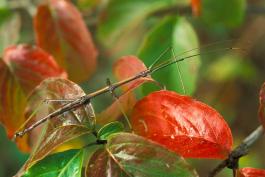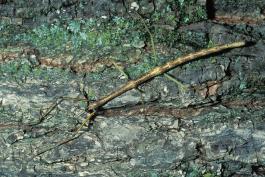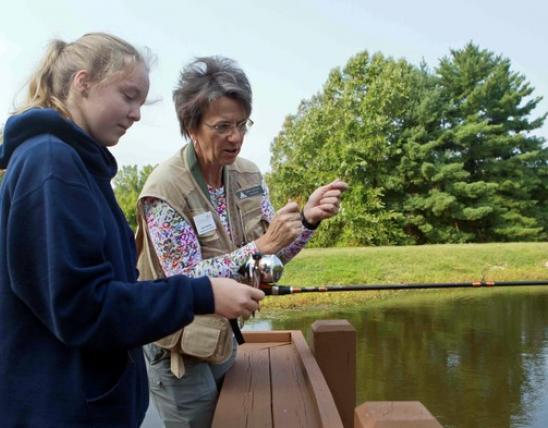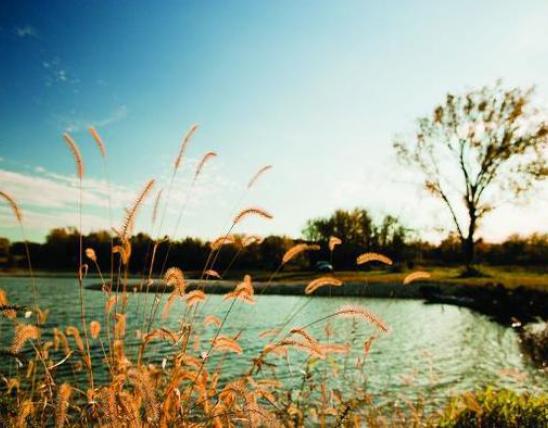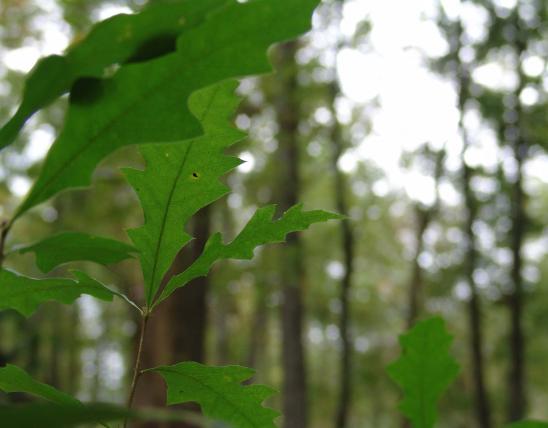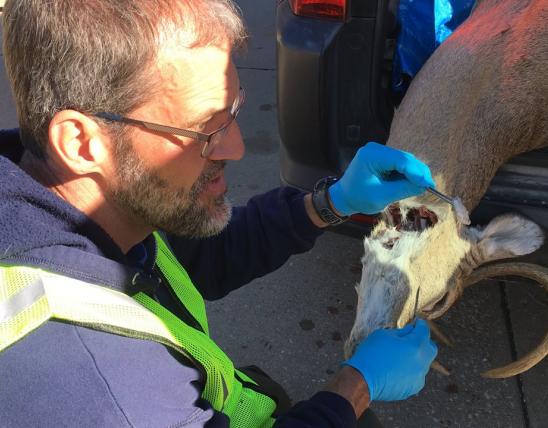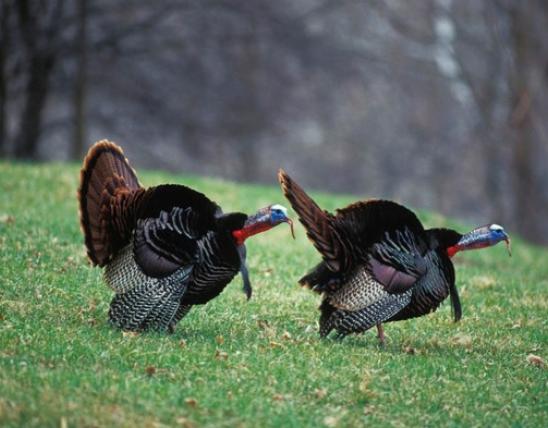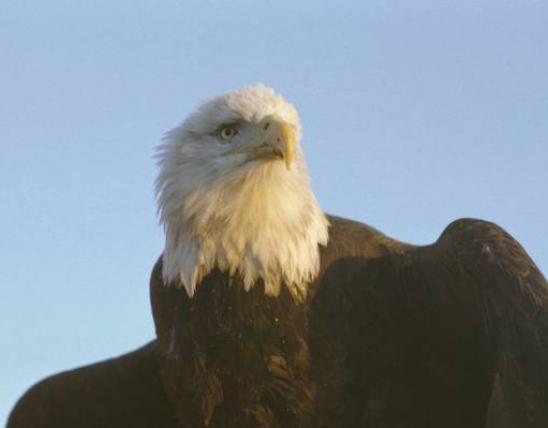
Walkingsticks, or stick insects, genuinely look like walking sticks: They are perfectly camouflaged to look like brown, tan, gray, or green twigs. The legs, body, and antennae are long and slender. The legs are all roughly the same length. All Missouri walkingsticks are wingless. Two species are most common in our state:
- The northern walkingstick (Diapheromera femorata) is very slender, and the antennae are two-thirds the total body length. Males are brown and can be 3 inches long; females are greenish brown and can be 3¾ inches long. The pincerlike circi at the tip of the abdomen are not segmented. Immatures are green.
- The giant walkingstick (Megaphasma denticrus) is the largest insect in North America, with females up to 7 inches long. The middle and hind legs have spines. Males have a single, large spine on each hind leg.

Habitat and Conservation
Walkingsticks are perfectly camouflaged for a life in trees and shrubs. They not only look like twigs but also sway their bodies to mimic the motion of branches in a breeze.
Adults are mostly nocturnal, feeding at night and resting during the day. We rarely notice walkingsticks unless they venture onto buildings or sidewalks.
Because they eat tree leaves, any occasional peaks in walkingstick populations can defoliate trees. Unless this happens repeatedly, or the trees are stressed by something else besides, the trees usually recover.
Food
Status
Common, but it is hard to see them.
The name of their order, Phasmida, is from the Greek word for "phantom" or "apparition," referring to their ability to disappear into their habitat.
Globally, there are thousands of species of walkingsticks, but a great majority of them are restricted to tropical regions. There are only about 30 species in North America, and most of those are found only in our southernmost states.
Walkingsticks used to be grouped with grasshoppers, crickets, and katydids in the order Orthoptera, but they have been given their own order.
Life Cycle
Human Connections
Ecosystem Connections






